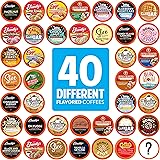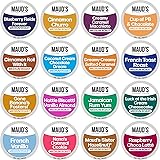Mastering the Cappuccino Routine: Your Guide to Cafe-Quality Coffee
Often, the quest for a perfect morning cappuccino feels challenging. Many coffee enthusiasts struggle to replicate café-level quality at home. The rich crema, the velvety milk, the delightful aroma—these seem unattainable for some. However, a consistent and thoughtful cappuccino routine can transform your coffee experience. The accompanying video offers a visual journey, showcasing the precise steps involved. This guide expands on those visuals, providing detailed insights and practical tips for your own home brewing journey.
The Essence of a Great Cappuccino Routine
A true cappuccino is a work of art. It balances bold espresso with expertly steamed milk. This delicate equilibrium is achieved through a precise routine. Without proper steps, the outcome can be disappointing. Imagine if your milk was too frothy, or your espresso was over-extracted. Instead, consider the methodical approach demonstrated.
Selecting Your Coffee Beans
The foundation of any great coffee is the bean. Origin matters significantly. Often, darker roasts are chosen for espresso. They provide a robust flavor. Lighter roasts, however, offer brighter notes. A fresh roast date is crucial. Beans are best used within weeks of roasting. This ensures peak freshness and flavor. Stale beans produce flat, lifeless espresso. The perfect bean becomes the heart of your cappuccino routine.
Essential Equipment for Your Cappuccino Journey
Good tools make a difference. An espresso machine is central to this routine. It must be capable of consistent pressure. A burr grinder is also indispensable. It ensures uniform particle size. This consistency is vital for proper extraction. A milk pitcher, designed for steaming, is another key item. Finally, quality cups enhance the experience. They retain heat better. Investing in these tools elevates your home barista skills.
The Espresso Shot: The Heart of Your Drink
Pulling a perfect espresso shot demands precision. This step is non-negotiable for a superb cappuccino. Without it, your drink will lack depth.
Grinding Your Coffee
Proper grinding is paramount. The grind setting must be fine. It should resemble powdered sugar. However, it cannot be too fine. That would restrict water flow. Too coarse, and water passes too quickly. A precise grind ensures optimal extraction. This creates the rich crema desired. Adjustments are often needed for different beans.
Dosing and Tamping
Measure your coffee accurately. Typically, 18-20 grams are used for a double shot. Distribute the grounds evenly. A level bed is essential. Then, tamp with firm, even pressure. This compacts the coffee. It creates resistance for the water. Inconsistent tamping leads to uneven extraction. This step directly impacts the shot quality.
Pulling the Perfect Shot
The espresso machine does its work. Hot water is forced through the puck. A rich, dark stream emerges. It should run like warm honey. The shot typically takes 25-30 seconds. This includes a pre-infusion phase. A good shot displays a thick, reddish-brown crema. This layer is vital. It adds a luxurious texture. It signifies proper extraction.
Mastering Milk Steaming for a Velvety Texture
Velvety steamed milk elevates a cappuccino. It transforms a simple coffee into an indulgent treat. This skill takes practice.
Choosing the Right Milk
Whole milk is often preferred. Its fat content creates a richer texture. Alternative milks also work well. Oat milk and almond milk are popular choices. However, their steaming properties vary. Experiment to find your favorite. Always use cold milk. This provides more time for steaming.
The Steaming Process
Position the steam wand correctly. It should be just below the milk surface. Introduce air briefly for aeration. This creates microfoam. Then, submerge the wand deeper. Swirl the milk gently. The pitcher should be cool to the touch. This texturing phase heats the milk. It also refines the foam. Aim for a temperature around 140-150°F (60-65°C). Too hot, and the milk tastes scorched. Too cold, and the foam collapses.
Achieving Microfoam
Microfoam is key. It looks glossy and uniform. It pours like wet paint. Large bubbles are undesirable. Tap the pitcher gently. Swirl the milk to integrate. This eliminates large air pockets. A smooth, homogeneous texture is essential. It blends seamlessly with the espresso.
The Art of Pouring: Completing Your Cappuccino Routine
Combining espresso and milk requires finesse. The pour is the final touch. It completes the cappuccino routine.
Preparing for the Pour
Swirl your espresso cup. This mixes the crema. Swirl your milk pitcher too. This keeps the microfoam integrated. Speed is important here. The milk should be poured immediately. Delay can cause separation. A fresh pour guarantees the best blend.
The Basic Pour
Hold the cup at an angle. Pour the milk steadily into the center. Start from a higher position. This breaks through the crema. Lower the pitcher as the cup fills. Bring the spout closer. The milk and espresso should combine. This creates a uniform brown base. This is the foundation for any latte art. Practice this basic pour consistently.
Exploring Latte Art
Latte art is the crowning glory. Hearts and rosettas are common designs. Imagine if you could create intricate patterns daily. This takes patience and practice. The technique involves manipulating milk flow. The goal is to lay down white milk on top. It floats on the espresso base. Each design requires specific movements. Do not be discouraged by early attempts. Consistency is achieved through repetition. Enjoy the process of learning. Your daily cappuccino routine will become a true pleasure.







